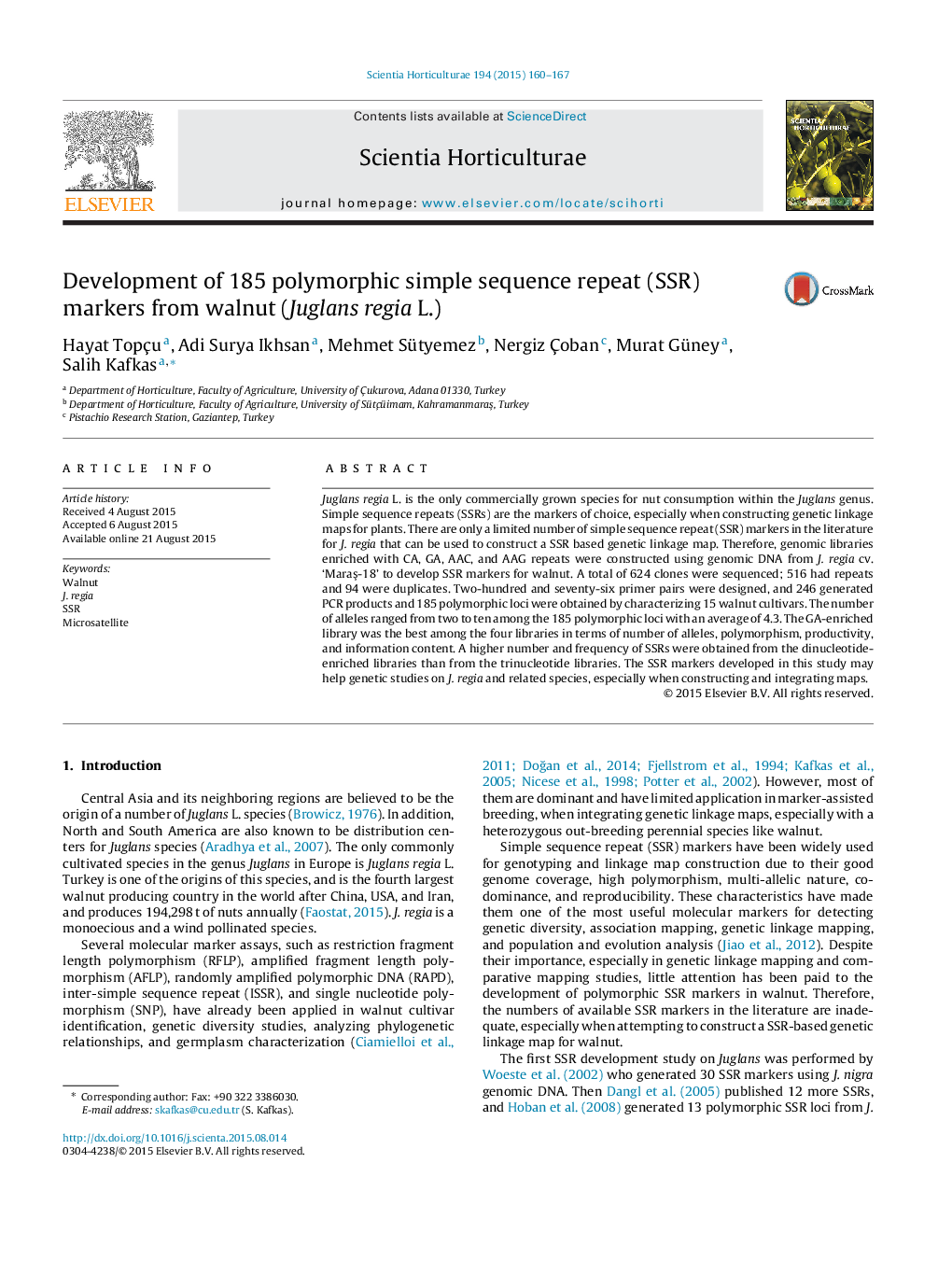| Article ID | Journal | Published Year | Pages | File Type |
|---|---|---|---|---|
| 4566328 | Scientia Horticulturae | 2015 | 8 Pages |
•Four enriched genomic libraries were constructed to develop SSR markers in walnut.•Of designed 246 primer pairs, 185 polymorphic loci were generated.•A higher number and frequency of SSRs was obtained from di-nucleotide-enriched libraries than tri-nucleotide libraries.•The GA-enriched library was the best among the four libraries in terms of number of alleles, polymorphism, productivity, and information content.
Juglans regia L. is the only commercially grown species for nut consumption within the Juglans genus. Simple sequence repeats (SSRs) are the markers of choice, especially when constructing genetic linkage maps for plants. There are only a limited number of simple sequence repeat (SSR) markers in the literature for J. regia that can be used to construct a SSR based genetic linkage map. Therefore, genomic libraries enriched with CA, GA, AAC, and AAG repeats were constructed using genomic DNA from J. regia cv. ‘Maraş-18’ to develop SSR markers for walnut. A total of 624 clones were sequenced; 516 had repeats and 94 were duplicates. Two-hundred and seventy-six primer pairs were designed, and 246 generated PCR products and 185 polymorphic loci were obtained by characterizing 15 walnut cultivars. The number of alleles ranged from two to ten among the 185 polymorphic loci with an average of 4.3. The GA-enriched library was the best among the four libraries in terms of number of alleles, polymorphism, productivity, and information content. A higher number and frequency of SSRs were obtained from the dinucleotide-enriched libraries than from the trinucleotide libraries. The SSR markers developed in this study may help genetic studies on J. regia and related species, especially when constructing and integrating maps.
